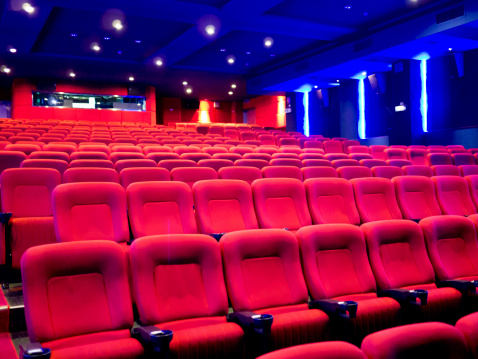
Proposed rule would require theaters to show movies with closed captioning and audio description for disabled patrons.
Movie theaters may soon be required to provide closed captioning and audio description services for hearing- and vision-impaired moviegoers. A proposed rule from the U.S. Department of Justice (DOJ) would amend regulations implementing Title III of the Americans with Disabilities Act (ADA) to require movie theaters to adopt new accommodations.
Title III calls for certain commercial entities to provide “auxiliary aids and services” to ensure “full and equal enjoyment” of public accommodations for disabled individuals. DOJ’s proposal would require movie theaters to exhibit movies with closed captioning and audio description, provide the necessary equipment for hearing- or vision-impaired patrons, and train employees to use these devices. The proposed rule would also require theaters to post public notices for movies showing with accommodations. However, movie theaters will not be forced to comply if the necessary accommodations would impose an “undue burden or fundamental alteration” of services.
Closed captioning allows captions to be delivered to individual patrons through a number of mechanisms, including cup holder display units, Rear-Window captioning, and special glasses. Audio description enables vision-impaired moviegoers to listen to a narration of the visual elements of a movie, such as scene changes and costumes, through individual headsets.
The proposed rule would only apply to movies that are produced with closed captioning or audio description. It would not require theaters to add these features to movies that do not already have them, nor would it prohibit theaters from playing movies that are not produced with these accommodations.
In many theaters today, movies with closed captioning and audio description are limited to only a few showings per week at off-peak times. These showings frequently go unpublicized and are usually scheduled for just one of the films being shown in a particular theater. DOJ’s proposed rule is intended to ensure consistent and widespread access across the country to accommodative movie showings.
Although litigation efforts have contributed to the accessibility of closed captioning and audio description services in some theaters, many vision- and hearing-disabled persons are still “shut out” from “this important social and cultural activity,” DOJ said in a statement.
In support of its proposed rule, DOJ cites the growing number of individuals with hearing and vision impairment, as well as the importance of movies in American culture. The proposed rule characterizes moviegoing as a “quintessential American experience” in which hearing- and vision-impaired individuals are unable to take part. DOJ suggests that its proposed measure could “contribute[] to the development of [disabled persons] communication and literacy” by exposing them to new ideas and knowledge through film, and enhance social interactions because “movies are a part of our shared cultural experience, ‘water cooler’ talk, and the subject of lunch-time conversations.”
Enhancing moviegoing for Americans with disabilities has been on the DOJ agenda for several years. The Department first sought public input in 2008 when it issued a notice of proposed rulemaking to adopt other revisions to the ADA. That notice did not specifically target movie theaters, but it asked the public to comment on whether the Department should require movie theater accommodations. DOJ then published an advance notice of proposed rulemaking in 2010 recommending an increase in the number of theaters offering accommodative services. That proposal would have established a five-year period within which 50 percent of all screens would be required to offer accommodations.
The current proposed rule is more aggressive than the 2010 proposal, and would require movie theaters to offer accommodations for all movies produced with closed captioning and audio description. Additionally, movie theaters with digital screens will have six months after the final rule is published to comply, rather than the five years originally proposed in 2010.
Special accommodative devices do not come cheap. Movie studios and theater operators commented on the 2010 notice, voicing concerns that the proposed requirements were burdensome and a fundamental alteration of services. On that proposed rule, the National Association of Theatre Owners expressed displeasure with the five-year, 50 percent compliance mark, suggesting instead that 25 percent was a more reasonable goal.
But rather than scale back from the 2010 propose, DOJ sought to make it more comprehensive, asserting that compliance with the proposed rule would not change the core service provided by movie theaters – screening and showing movies – but instead makes this service available to a larger population.
Last month, DOJ extended the public comment period for the current proposed rule. Comments will be accepted through December 1, 2014.
The proposed rule specifically requests public comment on whether the compliance period should be extended for analog screens, or if regulation of analog screens should be deferred until a later date.



